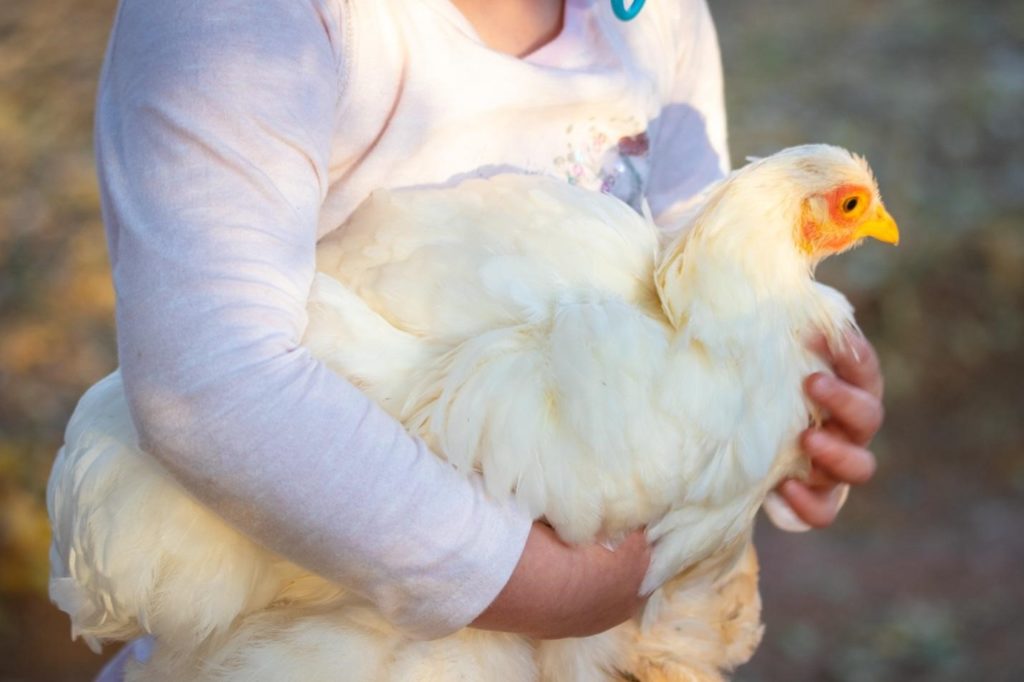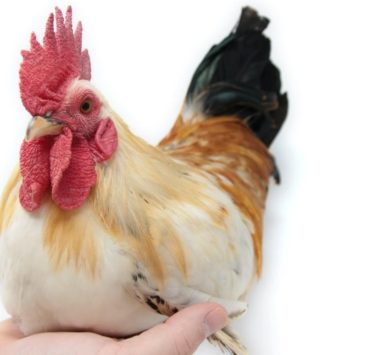
Decisions, decisions, decisions. When raising chicken, you’ll be confronted by many of them. Should you let them free-range or pasture-feed them? Should you raise them for eggs or meat? Should you clip their wings or leave them as they are? There are so many things you need to think about.
For now, we’ll address the last question: Clipping chicken wings. Should you do it, and what impact does it have on your birds’ health? Here’s everything you need to know.
When to Clip Chicken Wings
First off, let’s explore why you should consider clipping chicken wings in the first place. The truth is there’s no one-size-fits-all answer to this question. There are several reasons why it might be necessary to do this.
At the risk of stating the obvious, chickens are birds, and all birds fly. Although they may not soar the open skies for miles on end, they are perfectly capable of jumping over their enclosures and wandering off on an adventure to enjoy their newfound freedom.
While there’s nothing inherently wrong with that, keeping your chicken in an enclosure is less about keeping them in. It’s more about protecting them from the predators lurking in the shadows, waiting for the perfect opportunity to pounce and make a meal out of them.
If your chickens end up flying over the fence, which they can do surprisingly easily, what’s the point of having the fence in the first place? That’s the whole point of clipping their wings – to reduce their flight potential.
Housing Method
Keep in mind that clipping chicken wing feathers only becomes necessary depending on the housing method you’ve adopted and how you’re raising them. Here’s what we mean.
If you keep them in a covered enclosure, clipping their flight feathers is pointless. Nimble ground predators won’t be able to climb over the fence, avian predators won’t be able to swoop down on your chickens, and your poultry won’t be able to fly out.
If you’re raising free-range chicken, the whole point is for them to range freely – so to speak. If they encounter danger while roaming, clipping chicken flight feathers would be counterintuitive since they wouldn’t be able to fly up to tree branches to escape the looming danger.
Keep in mind as well that not all chickens fly over fences. Some breeds simply choose not to fly. Others like Orpingtons, Rhode Island Reds, Wyandottes, Brahma hens, and Silkies just can’t fly. Clipping chicken wings on birds that don’t even fly serves no purpose.
Feathers and Flight – The Anatomy of a Chicken Wing
Once you’ve established that it is indeed necessary to clip your chicken’s feathers, you need to understand the bird wing anatomy before you grab those scissors. Chickens have three different types of feathers on their wings.
First, there are the small, rounded feathers known as coverts on the bird’s top section. They are the ones closest to the chicken’s body. Next up are the long feathers in the middle section of the wing, known as the secondary feathers. Finally, at the end of the wing are the longest and largest feathers, known as the primary feathers. Each of the three sections overlaps over the other slightly.
Clipping the primaries on both wings is usually enough to prevent the chicken from flying over the fence. That being said, some chickens are more spirited and motivated than others and may still be able to jump the fence. If that’s the case, then it might be necessary to clip the secondary flight feathers as well.
What you don’t want to do is clip the pin feathers. These are the newly emerging feathers on the chicken. The shafts contain veins that will bleed if cut, causing the bird a tremendous amount of pain.
How to Clip Chicken Wings Safely: Step-by-Step Instructions

What you’ll need:
- A clean pair of scissors
- Cornstarch
- A rag or gauze
- A towel (optional)
1. Grab Hold of Your Chicken
Fair warning: Trying to get hold of a free-range bird is quite difficult to do. Some are a little friendly, but others might give you the run-around.
The best thing to do would be to corner them in a confined space. Then, place your hand over its back, making sure to hold down the wings. Handle them gently to avoid inflicting pain or injury on them. If the bird is nervous, cover it with a towel, bring it close to your body, and pet it gently to calm it down. Watch out for their claws and beaks to avoid getting injured in the process.
2. Expose the Wing You Intend to Clip
Once your chicken is calm, hold it upside down and gently separate the wing feathers to find the ones you want to clip. Carefully expose the primaries (the longer feathers at the tip). You may choose to clip one wing or both wings. It’s all a matter of preference. If you clip only one, your chicken will be thrown off balance every time it tries to fly. We, however, recommend clipping both wings.
3. Clip the Feathers
Using a clean pair of scissors, clip about two-thirds of the primary wing feathers using the secondaries as your guide. The whole idea behind clipping chicken wings is to get rid of a certain amount of feathers, not all of them.
Leave a few inches to avoid injuring your bird. Remember, the shaft may have blood veins running up to a certain length. Clip the feathers below this point since the outer sections of the feathers are usually dead.
If you accidentally clip the shaft at a higher point and it starts bleeding, apply cornstarch to reduce the bleeding and speed up the clotting process. Apply some gauze if necessary. If the bleeding doesn’t stop, take your chicken to the veterinarian as soon as possible.
4. Release Your Chicken
Once you’ve successfully clipped the wings, release the bird immediately so that it integrates with the rest of the flock. Birds whose wings have just been clipped will usually be disoriented for a little while. The sooner it gets back to its normal life, the better it will be for its well-being.
Do you need advice on how to keep your chickens healthy? Use our online Vet Chat right now to consult with a qualified veterinarian.
Feather picking vs. molting – learn how to tell the difference.



